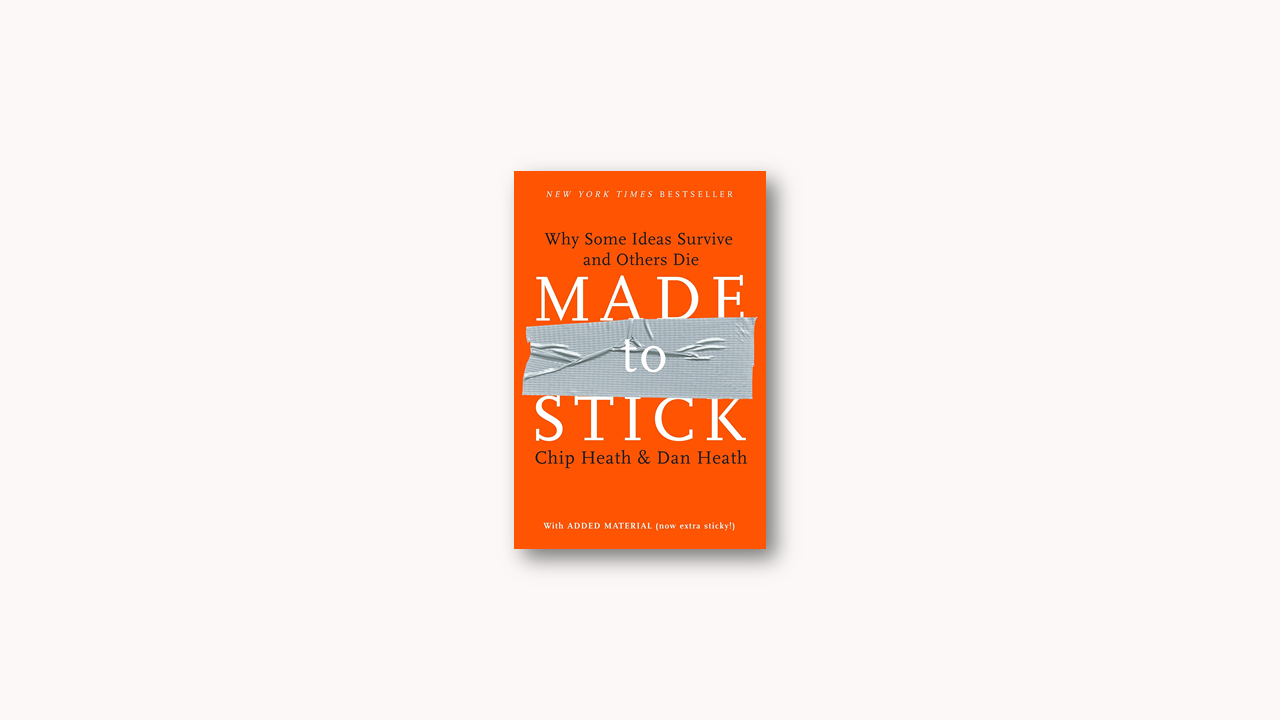To craft a sticky and compelling message useful for speaking, marketing, writing or anytime you need to make people listen, believe and act, remember the SUCCES principle.
S – Simple
If you try to convey 100 ideas, you might end up conveying nothing. Simple sticks. Complicated doesn’t.
- Strip your idea down to its core
- Share it using SUCCES
Start from most important aspect, then add important details, and finally all the other background information.
Commander Intent comes useful when you need people to act in a very big organization. CI is a short, simple sentence that sums up overarching the goal of the organization for localized decision making. Southwest Airline’s CI is “We are THE low fare airline.” So nobody would think to gift trinkents on board because it’s not in line with their CI.
Simplicity is not when you have nothing left to add but when you have nothing left to take away.
Remember when your remote control have 50 buttons, you can’t change the channel anymore.
U – Unexpected
Our rational brain starts paying attention once something is out of the ordinary. The key to get someone’s attention is to break their patterns. Mysteries are so powerful because they create a need for closure. Your goal is to raise questions and open gap of knowledge with mysteries and piquing curiosity.
- Identify your core message
- Present it in a counter-intuitive way people don’t expect
- Introduce a mystery and explain it with your message
Huh? For A Ha – The ‘huh?’ moment prepares the scene for the ‘a ha!’ moment.
C – Concrete
The Curse of knowledge comes in full force here. Experts tend to see things at a higher, more abstract level than novices and the danger is they’ll explain it in more abstract terms as well. What is concrete is something we can relate and have already experienced. For example, to introduce the movie Speed to Hollywood, produces pitched as “Die-Hard on a bus” and Allien as “Jaws on a spaceship”.
Likewise, mission statements like “Maximize shareholder values” sound like meaningless buzzword nobody cares. Compare it to JFK mission “Land a man on the moon and return him safely to the earth”. That’s concrete.
C – Credible
To make your idea credible, consider a few different triggers:
- Authority
- Anti-authority (people who experienced first hand the nefarious consequences, i.e. smokers)
- Details
- Statistics
E – Emotional
Research shows people who heard a story about a single child donated more than when they heard about the tribe with the same problem. And contrary to you might think, combining story with data did not produce better results.
Numbers appeal to our analytical brain while story appeals to our emotional brain. People who care act. People will do for the one what they won’t for the many.
To make your message emotional, consider these triggers:
- WIIFM – what’s in it for me?
- Associations – link something they care about to your message
- Identity – sometimes we don’t pick what’s best for us, we pick what’s best for group we belong to
Emotional is all about getting out of Maslow’s basement. Take for example, Texas government found it hard to make people stop littering. So they used identity. They had very Texans icons embody Texans virtue telling not to litter. Now the people heeded: being a Texan also meant respecting Texas and not littering.
S – Stories
People relate to stories, and stories inspire people.
Stories lower the audience’s resistance. People would be less inclined to push back as they start thinking about what it means and how they can act on it.
To craft a compelling story that fits, consider few different types:
- Challenge plot – underdog story, overcoming adversity, inspiring grit
- Connection plot – relationships, overcoming discrimination, social gaps
- Creativity plot – moving around obstacles with unconventional methods
Key Takeaway – Make an idea stick. Make the audience:
- Pay attention (unexpected)
- Understand and remember (concrete)
- Agree and believe (credible)
- Care (emotional)
- Be able to act on it (story)

